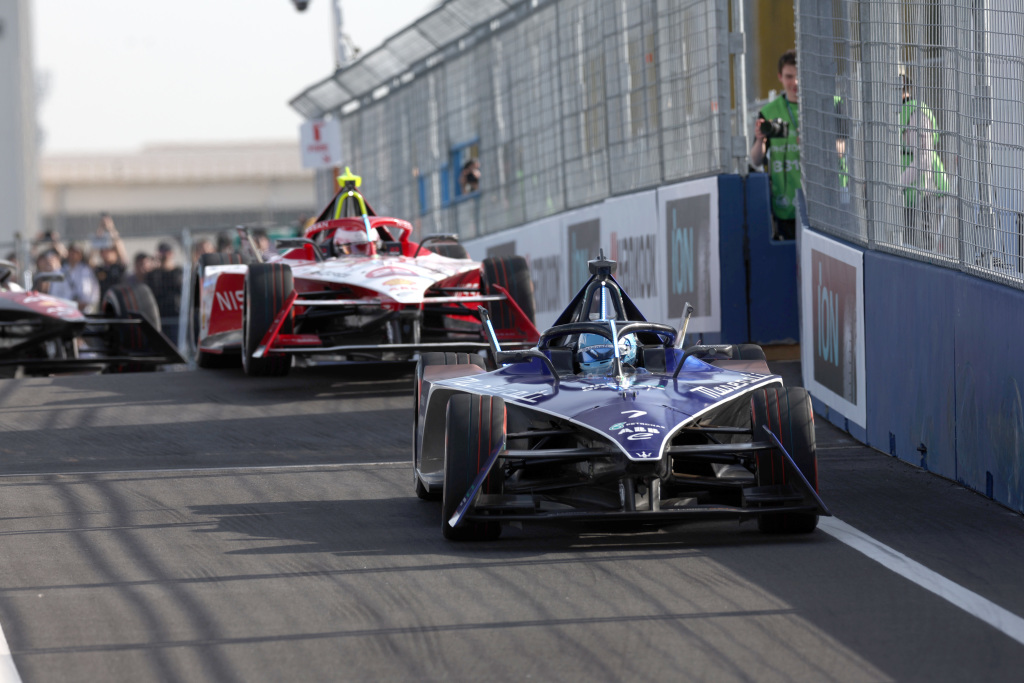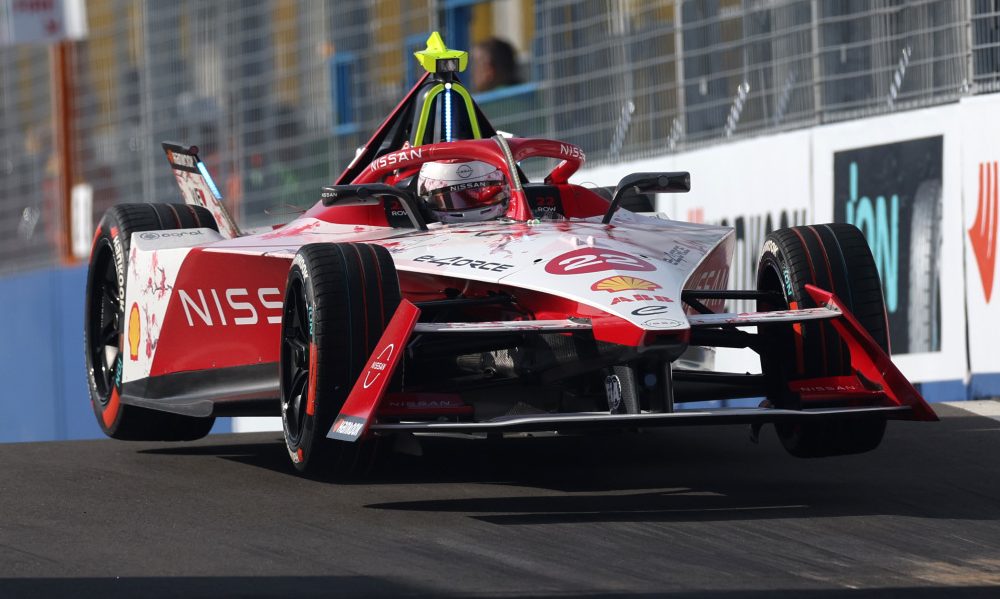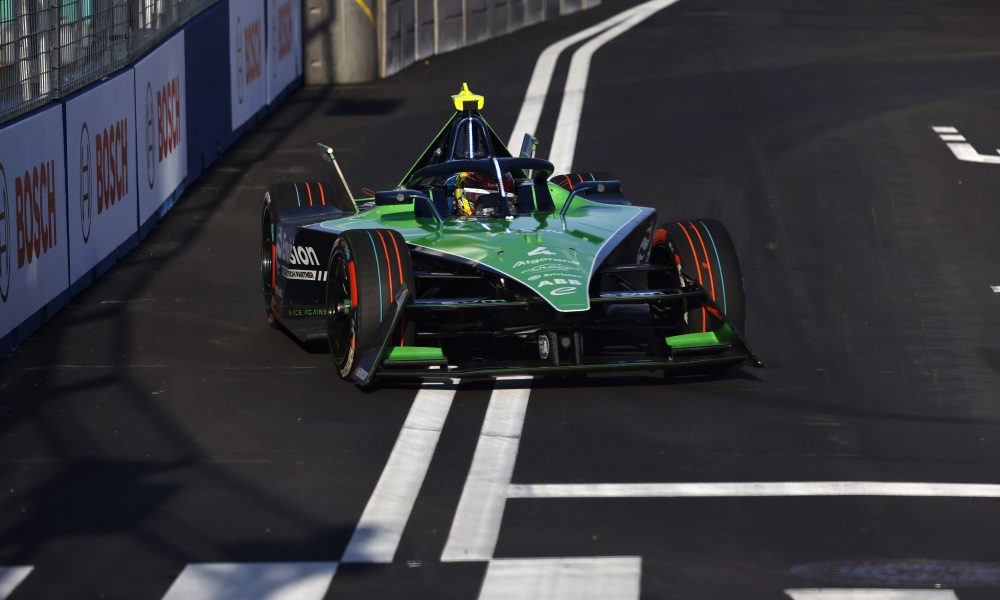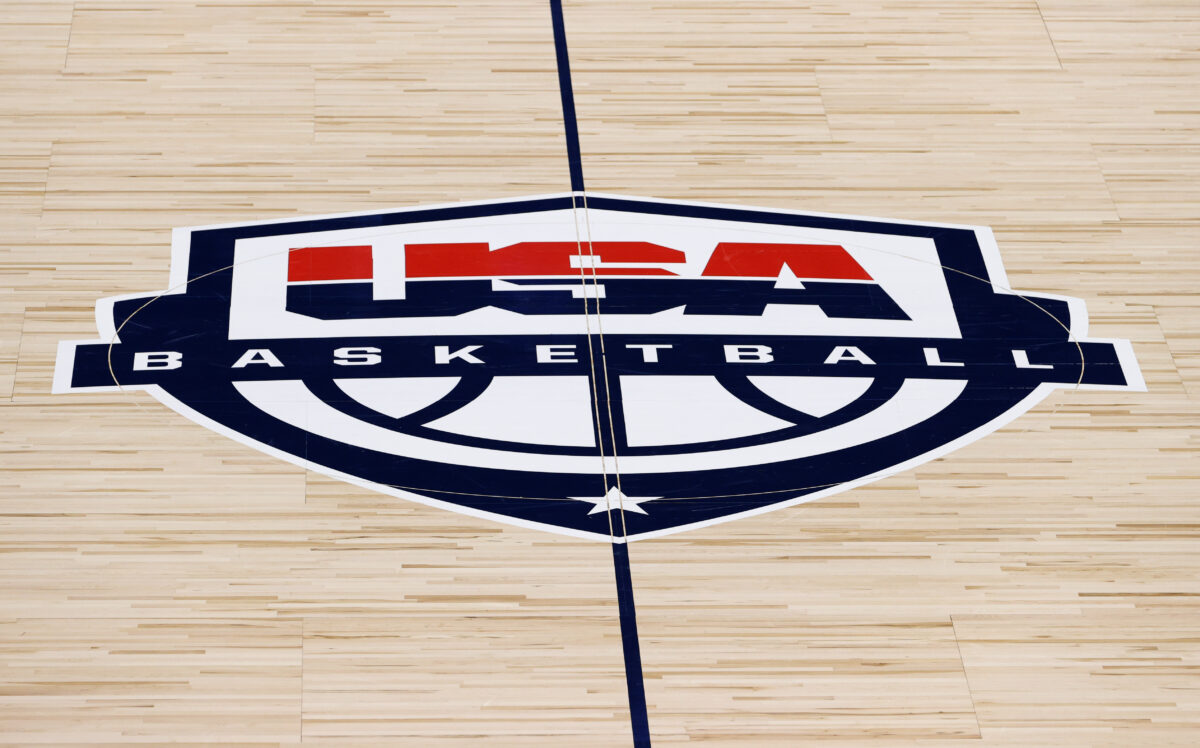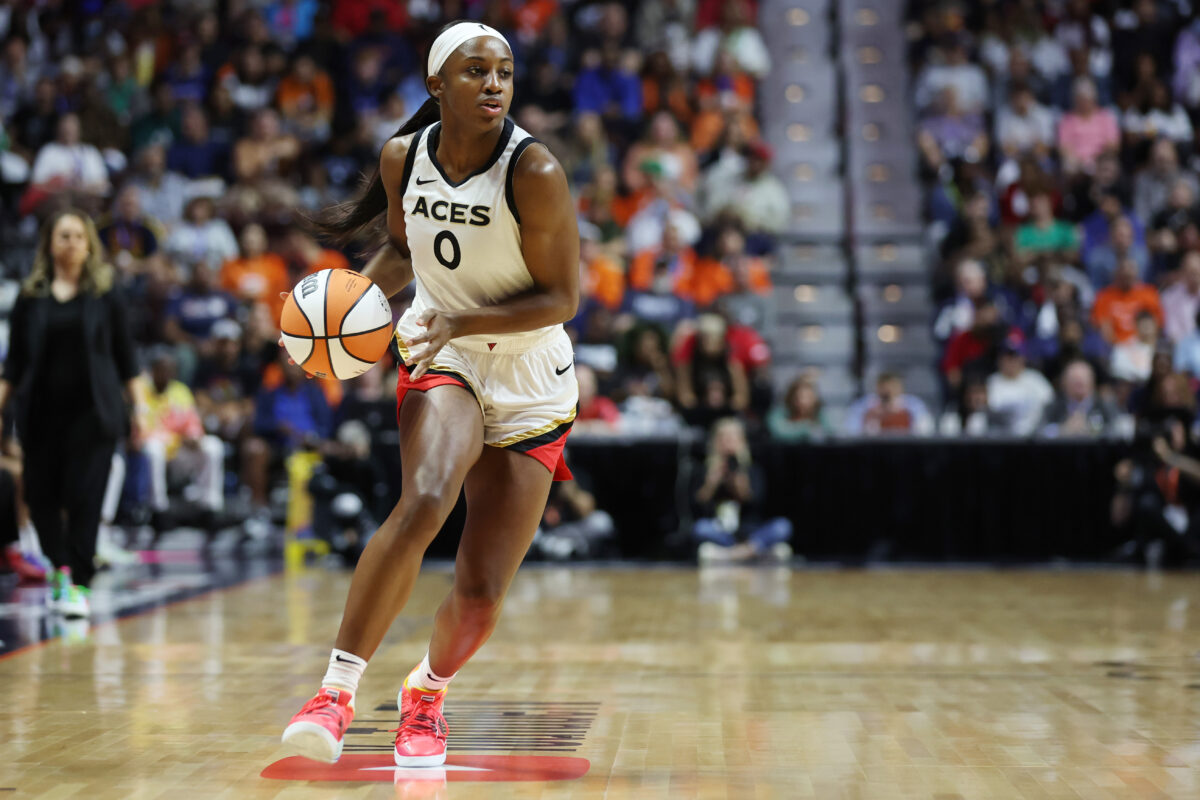Maximilian Guenther claimed his and Maserati MSG’s first win of the Formula E season on the streets of Tokyo, resisting a late charge from polesitter Oliver Rowland, who’d handed him the lead earlier to save power.
Nissan driver Rowland controlled the race for the first two thirds, but ceded the lead on lap 25 to fellow front-row starter Guenther, who’d lost out to a fast starting Edoardo Mortara at the start of the race.
A move to reclaim second from Mortara on lap 10 gave Rowland some breathing space up front as he went for his Attack Mode power boost for the first time, while a subsequent trip round the longer line for Mortara consolidated Guenther’s move.
A second trip to the Attack Mode zone dropped Guenther down once again on lap 14, but he retook position on track, getting by Mortara at Turn 16, before setting his sights on Rowland out front.
[lawrence-auto-related count=3 category=1394]
A safety car on lap 21 for debris after Jaguar TCS Racing’s Mitch Evans slammed the wall at Turn 9 three laps earlier bunched up the field and aided Guenther massively as Rowland needed to save power to make it to the end of the race, which had been extended by two laps to 35 after the caution period.
He was now in prime position to snatch the lead when the race resumed on lap 23, and two laps later, Rowland lifted on the approach to Turn 10, making Guenther’s pass for the lead an easy job, but Rowland remained on his tail. However, an attempt at snatching the lead with a pass around the outside on the final lap — what would have been the second race in succession the win was decided in such a fashion — failed to pay off, allowing Guenther to bring Maserati its first victory since the second race in Jakarta last June.

Third went to Andretti’s Jake Dennis, who capitalized on a failed attempt from da Costa to pass Rowland for second with three laps to go. Da Costa was left to take fourth ahead of TAG Heuer Porsche teammate Pascal Wehrlein, who’d also dropped down the order after a tussle with Dennis earlier in the race.
Nico Mueller claimed Abt Cupra’s first points of the season in sixth, ahead of Nick Cassidy who finished eighth on the road — having started 19th as a result of a penalty in qualifying — but was bumped up a place after Mortara was disqualified from what would have been Mahindra’s first points finish of the year in sixth for energy overuse.
Robin Frijns subsequently took eighth for Envision Racing despite a collision with Norman Nato on lap 32 that resulted in the Andretti driver receiving a five-second penalty which dropped him out of a points scoring position, too. Sergio Sette Camara was ninth, giving ERT its first points finish of the season, while Sacha Fenestraz ensured two Nissans scored points on home turf with 10th.
After pitting to replace his front wing, Evans came home 14th, behind DS Penske’s Jean-Eric Vergne, Envision’s Sebastien Buemi, and NEOM McLaren’s Jake Hughes, but ahead of the penalized Nato.
In a stark contrast to last time when he won in Sao Paulo, Sam Bird was the last of the runners to finish, taking 19th ahead of Abt Cupra driver Lucas di Grassi and Mahindra’s Nyck de Vries, who both retired after colliding while trying to avoid Evans. Bird did, however, claim the fastest lap, with a 1m19.731 on lap 27.
